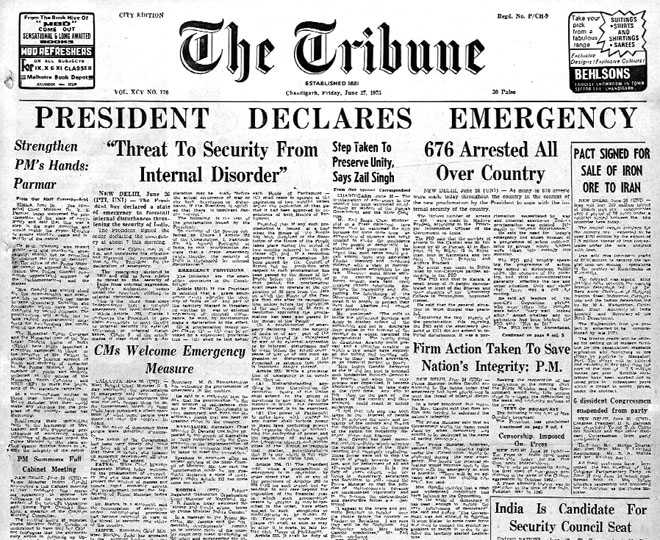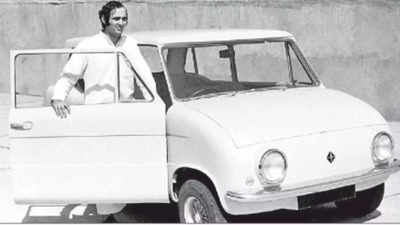We know that, often, an incident, or a sequence of events can’t be written down and published as is. Because the subject is politically sensitive, or there aren’t enough verifiable facts. The author, then, uses a “novelised” and a fictionalised form. The emergency, imposed by Indira Gandhi, was one such period with a large cluster of events. It has become fashionable these days to talk about the advent of fascism in India, while forgetting what fascism really is. What lack of freedom of speech and expression, really are. But, I digress; right at the beginning.

Manohar Malgonkar wrote a story, a novel, based in Delhi, with the Emergency as the vicious backdrop. This novel is The Garland Keepers. Having read the Devil’s Wind (fictionalised biography of Nana Saheb) and Sea Hawk (which I reviewed recently) recently, this was my third Malgonkar.
The story is about a bank scam, run by the powerful and mighty, discovered by a cop. And then the usual murder of the cop leads to his friends getting together to trace the clues, protect their own, and expose the guilty. The murdered cop’s step sister plays a role, a bit of an aborted love interest type of role though. But, murder, you say? Yes, you know, the trucks which used to mysteriously appear from the fog in Delhi (or elsewhere in the country), with untraceable license plates, hit and disappear? That type. People say, this is the type of truck which hit the exact car in Pranab Mukherjee’s convoy when he expressed his desire to become the prime minister, while he was being coaxed to become the president instead.

Moti Bagh, in South Western Delhi, a residential colony for government employees, plays a part in the story based in Delhi of the mid / late 70s. And so do many other locations in Delhi; apart from the cluster of roads just after Safdarjung’s tomb, Ajmeri and Kashmere gates, West End, the Maidens hotel (an Oberoi property now), Connaught Place and so on. The novel refers to Basant Gaon, near Palam as well. Should you be from Delhi (not the 5 years in the city type), you will recognise the geography, and many of the locations which exist even now. There are other references to locales and people, though not by their known names. This will need you to be familiar with these characters and places during the 70s, or even the 80s. Sagar Apartments (on Tilak Marg), a mound on the Gurugram side of the 09-27 runway at Delhi airport, Dhirendra Brahmachari, Indira Gandhi and her son Sanjay, his mistress Rukhsana Sultana, Arjun Dass, HKL Bhagat, CBI (the organization) , it’s then director D Sen etc. They are all there.
As the story twists around evidence collected by the investigating cop (now dead), there are a few paragraphs around Dhirendra Brahmachari’s receipt (evidently, as a gift) of a plane, without having to pay customs duty, as well. Similarly, there are references to Sanjay Gandhi’s version of Maruti. These help build the context, and give a flavor of the times.

There is only one place where Malgonkar mixes up his city geography a bit, but that can be forgiven because he does a good job of capturing the feel, without going into too much detail. He sticks to the plot. One might say, the lack of description of the city areas doesn’t help the readers’ imagination. True, but the story is about intrigue, the wheels within wheels, the machine, imposition of dictatorship, the corruption (moral and otherwise) of the high and mighty, and complete subversion of democracy. It gives a view into how governmental posts are allotted, how power is brokered, how people are removed. From governmental posts, and from the earth. It also gives a view into how fear was driven into people’s minds, to comply.
The book starts with an incident involving a Kashmiri, who had joined the Pakistani army, out on patrol near what is today the Line of Control between Kashmir, and the Pakistan Occupied Kashmir. His being “attractive”, drawing the attention of the CO and the rest of the patrol party and later desertion, form the first chapter
Malgonkar holds back revealing too much about the bank scam, and how it happened, till about 1/3rd of the way down. And reveals the pieces gradually in a tightly written, and fast moving story. It is only towards the end that the thread with the Kashmiri deserter is tied, thus revealing the connections.
The one thing that could have been better is tying up the different threads towards the end. It just gets a little jumbled, and the untangling gets hurried, abrupt and rather simplistic. The climax gets anticlimactic.
The villains of the piece are evident early on. What keeps the reading alive is the desire to know the connections of the dots. Clearly, this book (published in 1986) could not have been written or published for years after the emergency, and certainly not till Indira Gandhi was alive. Malgonkar would have landed up in jail under the MISA .
This is a good book to taken on a long flight, or a train journey and would make a good script for a movie.

